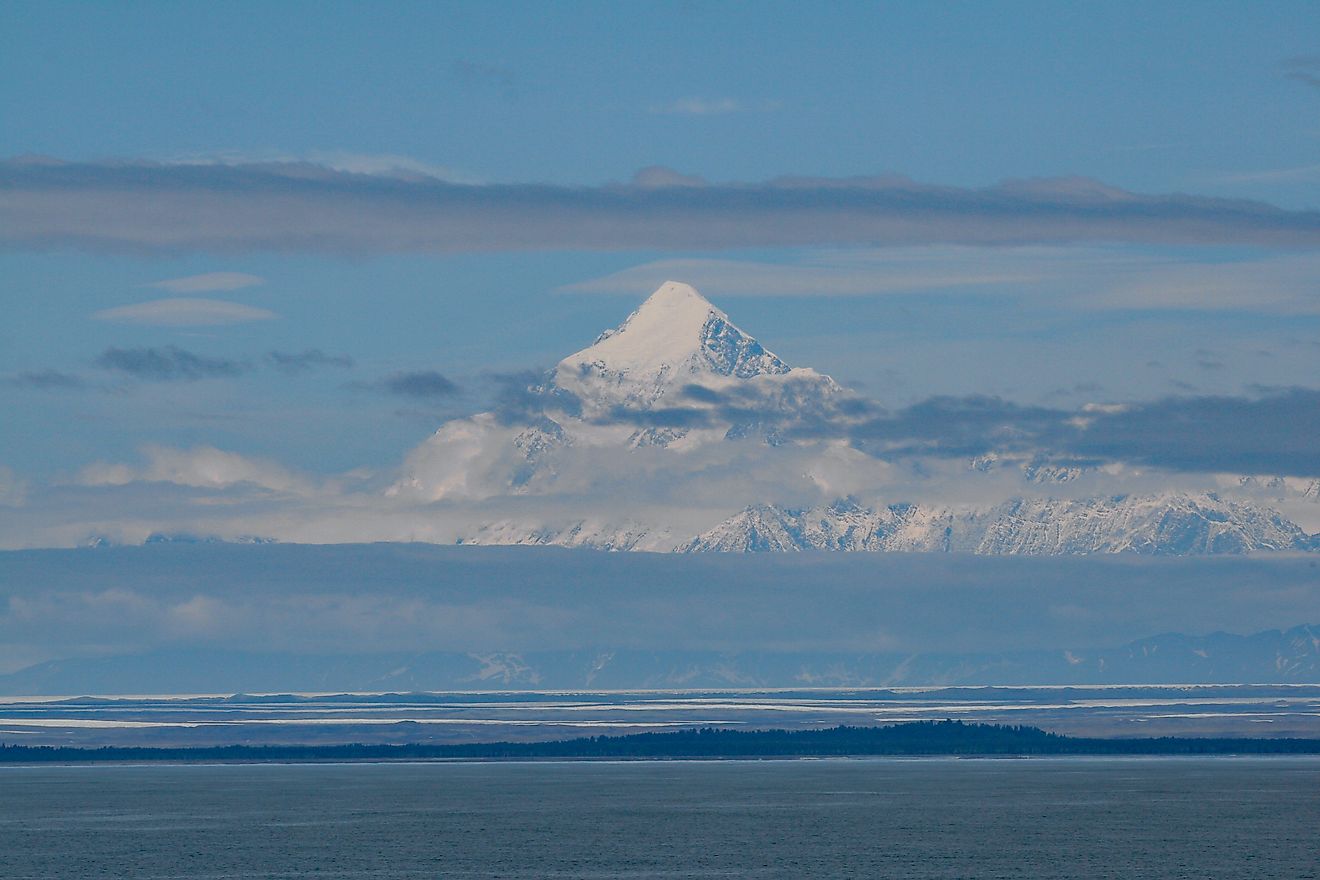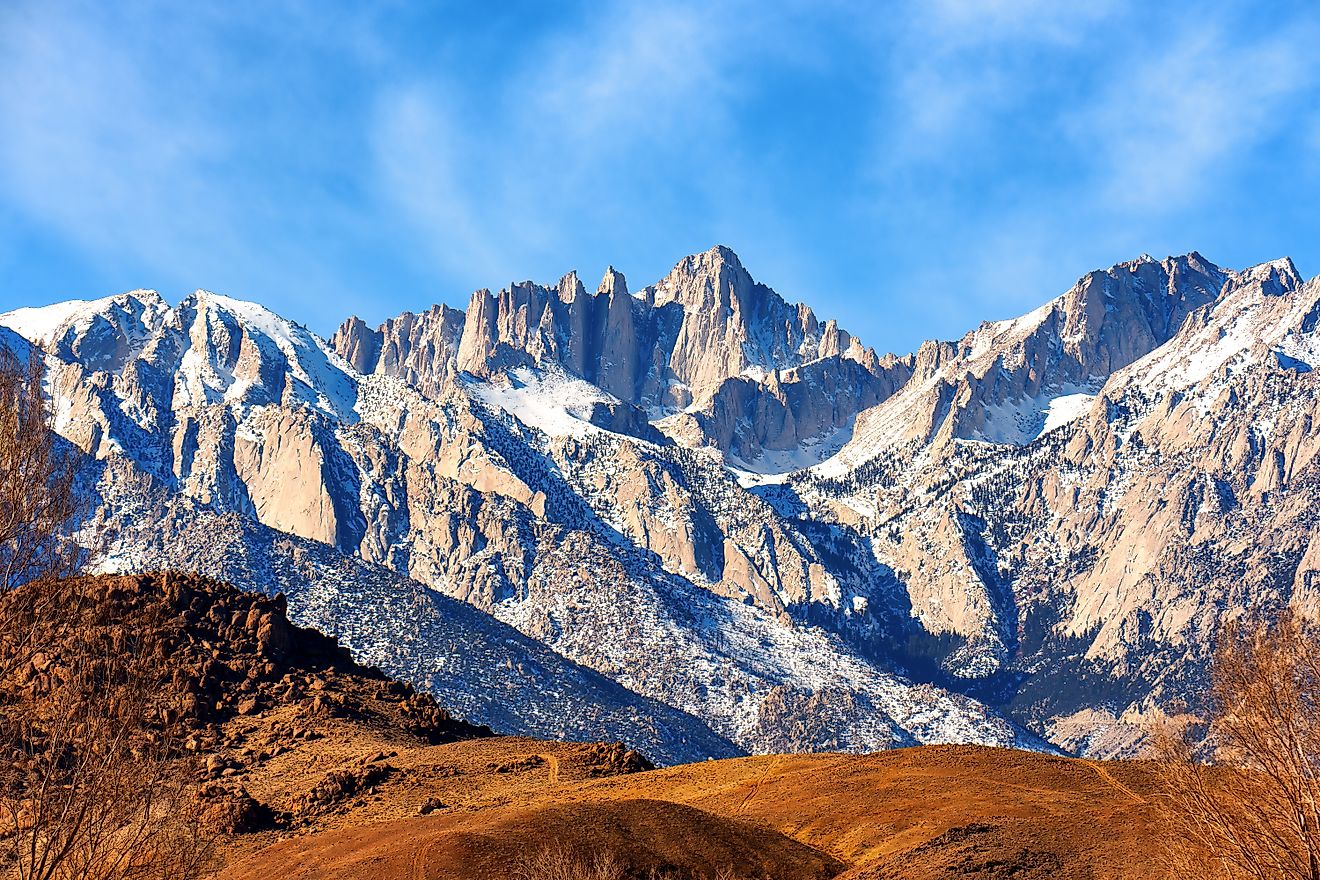
Mount Rainier
Rising 14,410 feet above sea level, Mount Rainier is not only the tallest peak in Washington State but also one of the most awe-inspiring natural landmarks in the Pacific Northwest. A colossal stratovolcano draped in glaciers, blanketed by forests, and surrounded by subalpine meadows bursting with wildflowers, Mount Rainier National Park is a place where geology, ecology, and human history intertwine.
Located just 35 miles southeast of Tacoma and 30 miles northeast of Mount St. Helens, this volcanic giant has long captivated mountaineers, nature lovers, and scientists. But beyond its sheer height and imposing silhouette lies a dynamic landscape teeming with life—and history.
A Dormant Giant in the Cascades
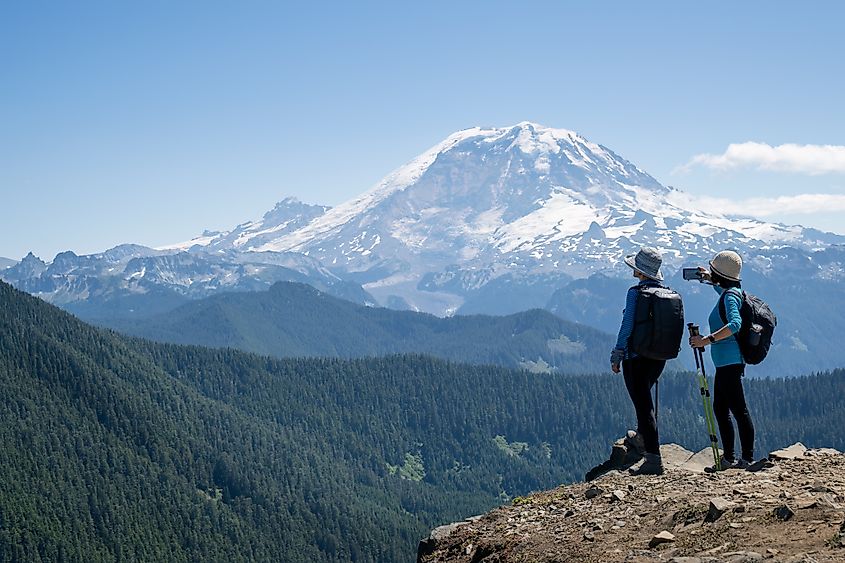
Mount Rainier is a dormant volcano that last erupted roughly 150 years ago, though it remains one of the most closely monitored volcanoes in the US. Its summit consists of three major peaks: Columbia Crest, Point Success, and Liberty Cap, with Columbia Crest marking the official summit.
Formed over the past million years by successive lava flows and explosive eruptions, Rainier’s rugged upper flanks bear the hallmark of glacial carving. Today, it is home to the largest single-mountain glacier system in the contiguous United States, with more than two dozen named glaciers radiating from its crown. Among them, Emmons Glacier on the northeast face is the largest by area, while Nisqually Glacier has become a key site for climate research due to its observable retreat and advance over time.
A National Park Carved by Ice and Time
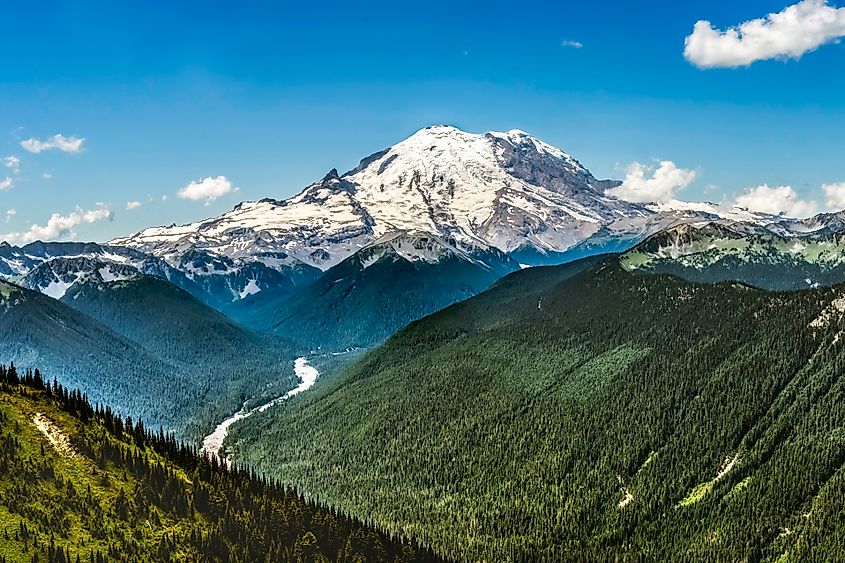
In 1899, Mount Rainier became the fifth national park in the United States, preserving 369 square miles of wilderness. At the heart of the park is the volcano itself, but the surrounding area is just as diverse and spectacular. From ancient coniferous forests to alpine meadows and tumbling waterfalls, the terrain changes drastically with elevation.
At lower altitudes, dense forests of giant Douglas firs, western red cedars, and mountain hemlocks dominate. As elevation increases past 4,500 feet, the trees begin to thin, giving way to subalpine meadows, and eventually, above 7,000 feet, alpine tundra. These meadows explode in color during the warmer months, when lupines, paintbrush, and avalanche lilies bloom in staggered waves up the mountainside.
The Paradise area, situated on Rainier’s southern slope at about 5,400 feet, is one of the most visited regions in the park, famous for its wildflower displays and heavy snowfall. The ranger station here has recorded snowfall totals exceeding 80 feet in particularly harsh winters, making it one of the snowiest places on Earth.
Climate and Weather: A Land of Extremes
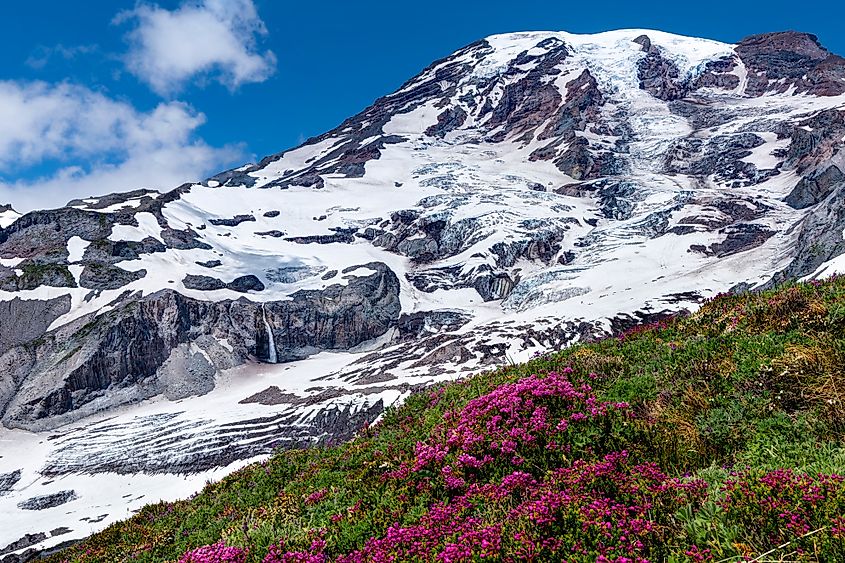
Mount Rainier’s weather is as dramatic as its topography. The park’s cool montane climate brings warm, dry summers and long, snowy winters. But even in midsummer, snow can fall at the summit. Precipitation is heaviest on the mountain’s western slopes, fed by moist air from the Pacific Ocean that condenses as it rises over the Cascades.
This heavy snowfall fuels the park’s glacier system and creates challenges for climbers, hikers, and rescue crews alike. Avalanches and rapidly changing conditions are part of the mountain’s seasonal rhythm, especially in high-altitude zones where visibility can plummet in minutes.
Flora and Fauna of Mount Rainier
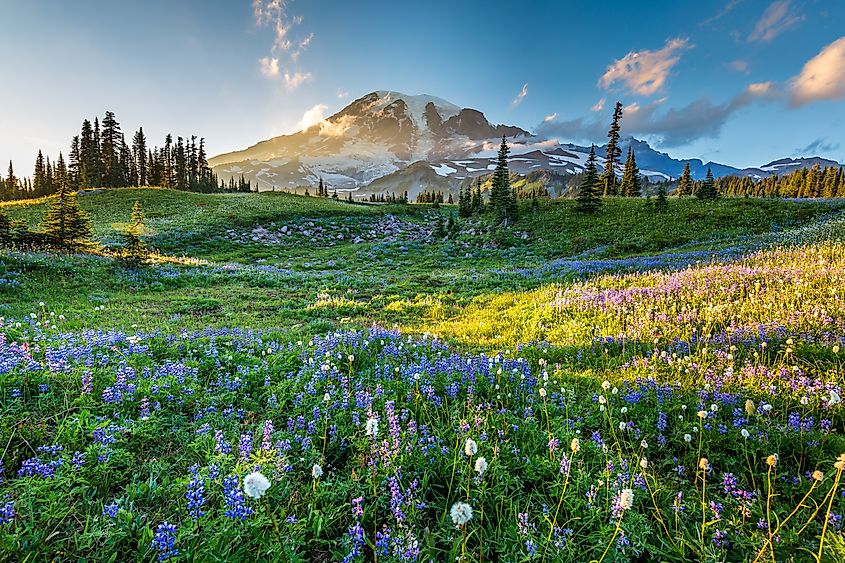
Nearly 60% of Mount Rainier National Park is covered in forest, supporting an astonishing range of plant and animal life. The lower elevations feature old-growth stands of conifers that have stood for centuries. Higher up, the landscape transitions into flower-filled meadows and tundra environments.
The park’s wildlife is just as diverse. Large mammals like Roosevelt elk, black bears, black-tailed deer, and mountain goats roam the forests and ridges. Smaller residents include raccoons, marmots, and Douglas squirrels. Bird watchers can spot Clark’s nutcrackers, gray jays, Steller’s jays, and a variety of woodpeckers and warblers, especially during spring and summer migrations.
With over 220 bird species recorded, Mount Rainier is a critical habitat for both permanent residents and seasonal visitors.
A Destination for Adventure

Mount Rainier is a magnet for climbers and trekkers from around the world. Roughly 10,000 people attempt to reach its summit each year, often as part of a guided, two-day climb from the Paradise area via the Disappointment Cleaver or Emmons Glacier routes.
For those not aiming for the summit, the park offers an extensive network of hiking trails—over 260 miles—that wind through ancient forests, cross alpine meadows, and skirt along glacial rivers. Highlights include:
-
Skyline Trail (5.5 miles) – A popular loop from Paradise offering panoramic views of the summit, wildflowers, and waterfalls.
-
Naches Peak Loop (3.5 miles) – A family-friendly trail with expansive views of Rainier and the surrounding peaks.
-
Wonderland Trail (93 miles) – A demanding, multi-day circuit that encircles the entire mountain, passing through nearly every major ecosystem in the park.
The Pacific Crest Trail also traces part of the park’s eastern boundary, connecting Mount Rainier to a broader network of wildlands stretching from Mexico to Canada.
Visitor Centers and Lodging
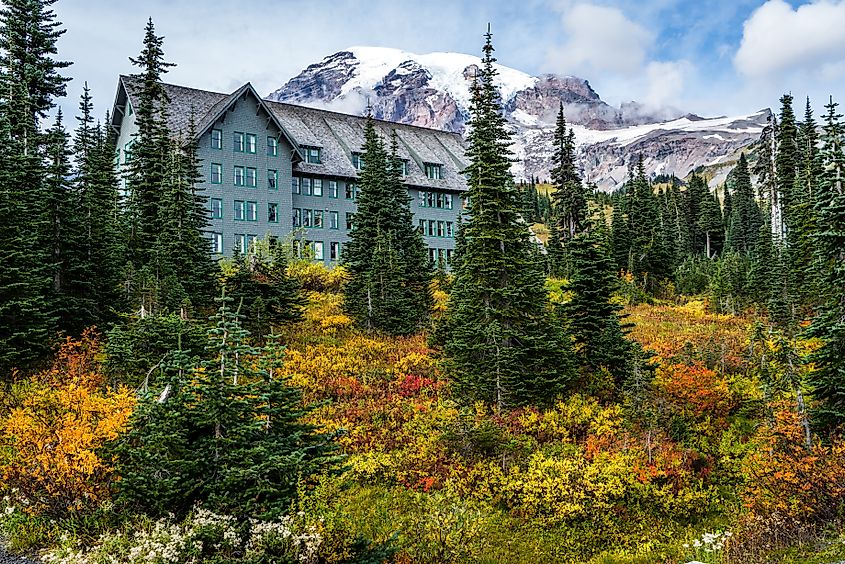
Mount Rainier National Park features three main visitor centers, each offering access to different aspects of the park:
-
Paradise Visitor Center: The park’s most visited hub, located on the southern slope. It includes interpretive exhibits, ranger programs, and trailheads.
-
Sunrise Visitor Center: Situated at 6,400 feet on the park’s east side, this is the highest point accessible by vehicle and a gateway to high-alpine hikes.
-
Ohanapecosh Visitor Center: Located in a lush old-growth forest near the Ohanapecosh River, this area is less crowded and features hot springs and forest trails.
The historic Paradise Inn, built in 1916, remains one of the most iconic lodges in the US national park system. It offers seasonal lodging and dining, combining rustic charm with stunning views of the mountain.
A History Carved by People
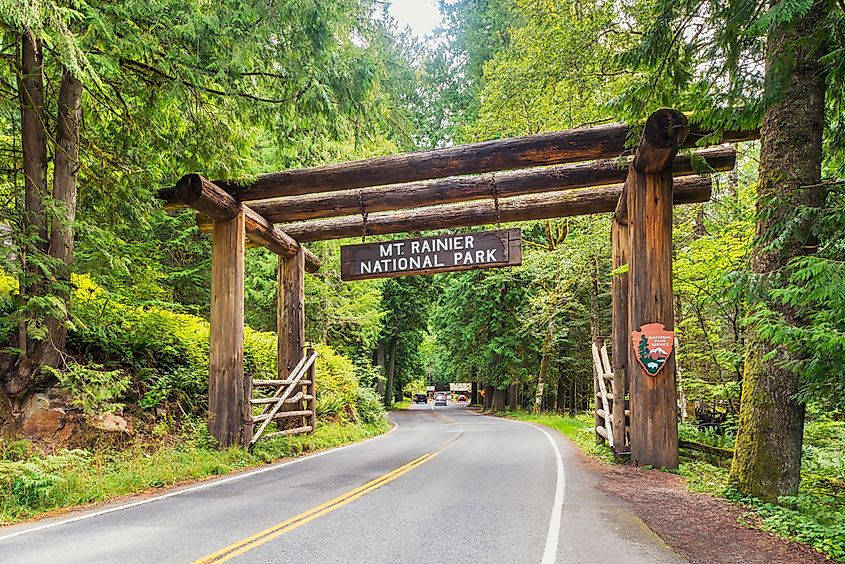
Long before Mount Rainier became a destination for recreation and science, it was sacred to Indigenous peoples of the region. Known traditionally as Tahoma or Tacoma, the mountain has been a spiritual symbol and resource for tribes such as the Puyallup, Muckleshoot, and Nisqually for thousands of years.
European Americans first documented the mountain in 1792 when British explorer George Vancouver named it after naval officer Peter Rainier. The first confirmed ascent came in 1870, when Hazard Stevens and Philemon Van Trump climbed to the summit. Their success helped spark national interest in preserving the area, eventually leading to the creation of the national park.
Today, efforts continue to recognize and honor Indigenous connections to the mountain through interpretive materials, partnerships, and dual naming proposals.
Plan Your Visit
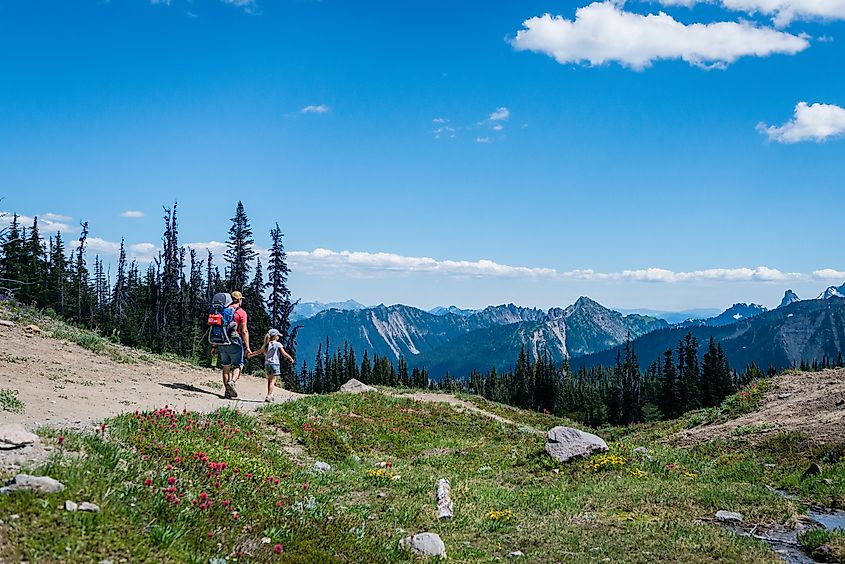
Mount Rainier National Park is open year-round, though some areas become inaccessible in winter due to heavy snowfall. Summer and early fall offer the best conditions for hiking and climbing, while winter brings snowshoeing and backcountry skiing.
-
Entrance fee: $30 per vehicle (valid for 7 days)
-
Best time to visit: July to September for hiking and wildflowers; December to March for winter sports
-
Nearest gateway towns: Ashford, Enumclaw, Packwood
Frequently Asked Questions
Is Mount Rainier an active volcano?
Yes, Mount Rainier is an active stratovolcano, though it hasn’t erupted in over 150 years. It is still capable of future eruptions and is closely monitored.
How long does it take to climb Mount Rainier?
Most summit climbs take two days and require proper equipment, training, and often a guide.
Are there beginner-friendly hikes in the park?
Yes, trails like Nisqually Vista and Grove of the Patriarchs offer short, accessible walks with rewarding views.
When do wildflowers bloom at Mount Rainier?
Wildflowers bloom from mid-July through early August, with timing varying by elevation and snowmelt.
Can you drive to the summit?
No. The highest point accessible by car is the Sunrise area at 6,400 feet. The summit must be reached on foot.

